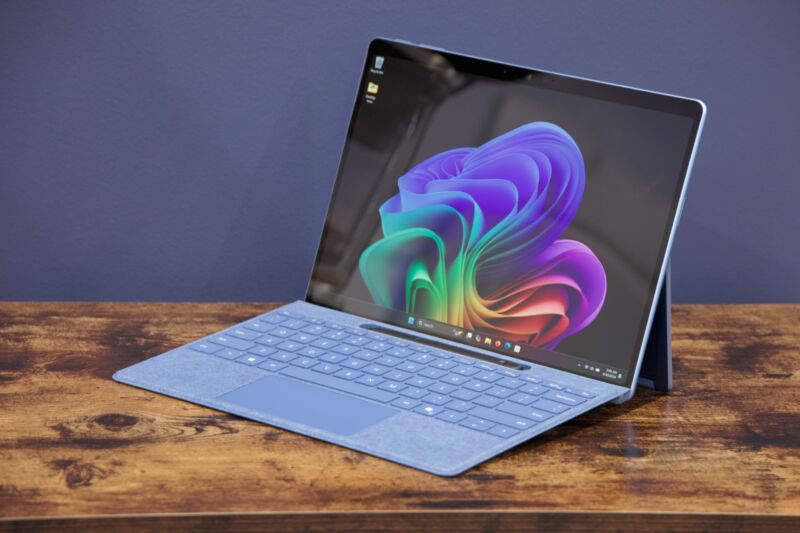Surface Pro 11 and Laptop 7 review: An Apple Silicon moment for Windows

Enlarge / Microsoft's Surface Pro 11, the first flagship Surface to ship exclusively using Arm processors. (credit: Andrew Cunningham)
Microsoft has been trying to make Windows-on-Arm-processors a thing for so long that, at some point, I think I just started assuming it was never actually going to happen.
The first effort was Windows RT, which managed to run well enough on the piddly Arm hardware available at the time but came with a perplexing new interface and couldn't run any apps designed for regular Intel- and AMD-based Windows PCs. Windows RT failed, partly because a version of Windows that couldn't run Windows apps and didn't use a familiar Windows interface was ignoring two big reasons why people keep using Windows.
Windows-on-Arm came back in the late 2010s, with better performance and a translation layer for 32-bit Intel apps in tow. This version of Windows, confined mostly to oddball Surface hardware and a handful of barely promoted models from the big PC OEMs, has quietly percolated for years. It has improved slowly and gradually, as have the Qualcomm processors that have powered these devices.